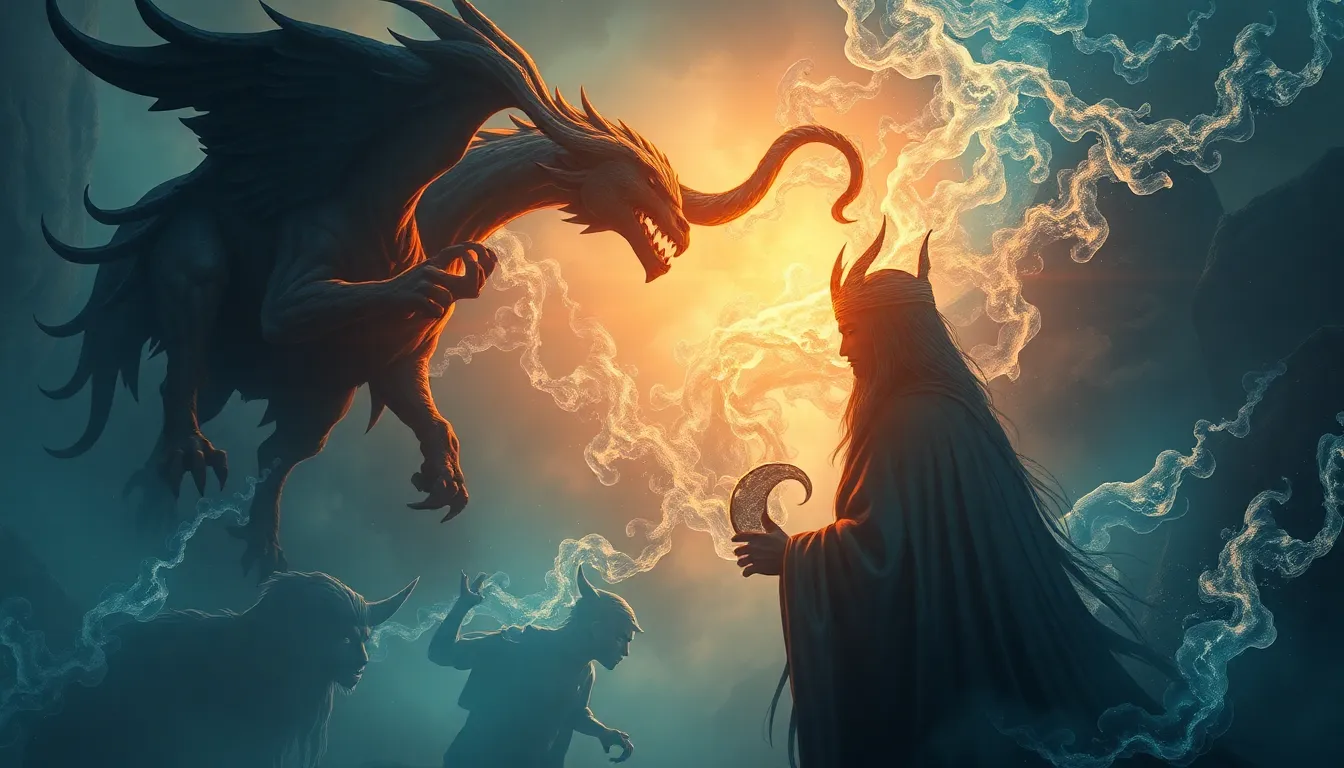The Underworld: A Mythical Realm of Fear and Fascination
I. Introduction to the Underworld
The concept of the underworld is a significant element in various mythologies around the world. It is often depicted as a realm where souls go after death, a place that evokes both fear and fascination. The underworld serves as a stage for moral lessons, exploring the duality of life and death, and the continuation of existence beyond the physical world.
Cultural interpretations of the underworld vary widely, from the Greek Hades to the Egyptian Duat, each reflecting the beliefs and values of their respective societies. This article aims to delve into the multifaceted nature of the underworld, exploring its historical context, major deities, psychological implications, and cultural practices, while also considering its contemporary relevance.
II. Historical Context of the Underworld
The myths surrounding the underworld have evolved significantly over time across various civilizations. Each culture has developed its own narratives that reflect their understanding of death and the afterlife.
- Ancient Egypt: The Egyptians viewed the afterlife as a journey through the Duat, where the deceased would face judgment by Osiris.
- Ancient Greece: The Greeks believed in Hades, a realm ruled by the god of the same name, where souls of the dead awaited their fate.
- Mesopotamia: The underworld, known as Kur, was seen as a dark, dreary place where all souls went, regardless of their earthly deeds.
The role of the underworld in ancient belief systems was paramount, often intertwined with concepts of morality, ethics, and the societal understanding of death. These narratives served not only to explain what happens after death but also to instill a sense of order and justice in the living world.
III. Major Deities and Figures of the Underworld
Various cultures have personified their underworlds through deities and mythological figures, each embodying unique traits and responsibilities.
- Hades: In Greek mythology, Hades is the god who presides over the underworld, ensuring the dead are cared for and that the balance of life and death is maintained.
- Osiris: The Egyptian god of the afterlife, Osiris represents resurrection and rebirth, overseeing the judgment of souls.
- Yama: In Hindu mythology, Yama is the god of death who guides souls to the afterlife and judges their deeds.
These figures are often laden with symbolism, representing not only death but also the cycle of life, transformation, and the moral consequences of human actions.
IV. The Underworld in Literature and Art
The underworld has been a rich source of inspiration in literature and art throughout history. Classical writers such as Homer and Virgil provide vivid depictions of the afterlife.
- Homer: In the “Odyssey,” Homer describes the journey to the underworld, portraying the souls of the dead and their experiences.
- Virgil: In “The Aeneid,” Virgil presents a detailed and symbolic portrayal of the underworld, including the concept of judgment.
Artistic interpretations have also flourished, with works like Dante’s “Inferno” and the paintings of Hieronymus Bosch vividly illustrating the themes of sin, punishment, and redemption. In contemporary times, the underworld continues to be represented in various forms of media, including films, video games, and novels, reflecting society’s ongoing fascination with death and the afterlife.
V. The Psychological Impact of the Underworld
The underworld serves as a powerful archetype in human psychology, representing the unknown and the fears associated with it. This duality of fear and fascination creates a compelling narrative about human existence.
- Fear: The underworld often embodies the fear of the unknown, the finality of death, and the consequences of one’s actions.
- Fascination: It also captivates the imagination, prompting exploration of concepts such as immortality, legacy, and the nature of existence.
Moreover, the underworld can symbolize the inner struggles individuals face, representing personal transformations, crises, and the journey toward self-understanding.
VI. Cultural Rituals and Practices Associated with the Underworld
Various cultures have developed rituals and practices to honor the dead and acknowledge the significance of the underworld.
- Funerary Practices: Many societies have elaborate burial customs that reflect their beliefs about the afterlife, such as mummification in Ancient Egypt or cremation in Hinduism.
- Festivals: Events like Día de los Muertos in Mexico and Samhain in Celtic traditions celebrate and honor the deceased, acknowledging their presence in the lives of the living.
These rituals serve as a bridge between the living and the dead, providing comfort and a sense of connection to ancestors.
VII. The Underworld and Morality
The underworld often embodies the moral compass of a society, depicting the consequences of one’s actions in life.
- Judgment and Punishment: Many cultures have narratives that describe judgment after death, where one’s deeds determine their fate in the afterlife.
- Moral Lessons: Myths involving the underworld often convey strong moral lessons, teaching about virtue, sin, and the importance of ethical living.
The portrayal of the underworld reflects societal values, fears, and the collective understanding of justice and morality.
VIII. Contemporary Interpretations of the Underworld
In modern times, interest in underworld themes has surged, often explored in new spiritual contexts and popular culture.
- Spirituality: Contemporary spirituality frequently revisits themes of the underworld, encouraging individuals to embrace the cycles of life and death.
- Popular Culture: Movies, television shows, and video games often incorporate underworld elements, providing fresh interpretations of ancient myths and engaging new audiences.
These representations offer a platform for society to grapple with the concepts of death, legacy, and the nature of existence in a rapidly changing world.
IX. The Underworld: A Source of Inspiration
The underworld continues to be a profound source of inspiration across various forms of art and literature. Its themes resonate deeply, influencing writers, artists, and thinkers throughout history. By exploring the underworld, we gain insight into the human condition, the complexities of life and death, and the enduring quest for meaning in our existence.
As we continue to navigate the mysteries of the afterlife, the underworld remains a captivating topic, inviting us to confront our fears and embrace the unknown.




